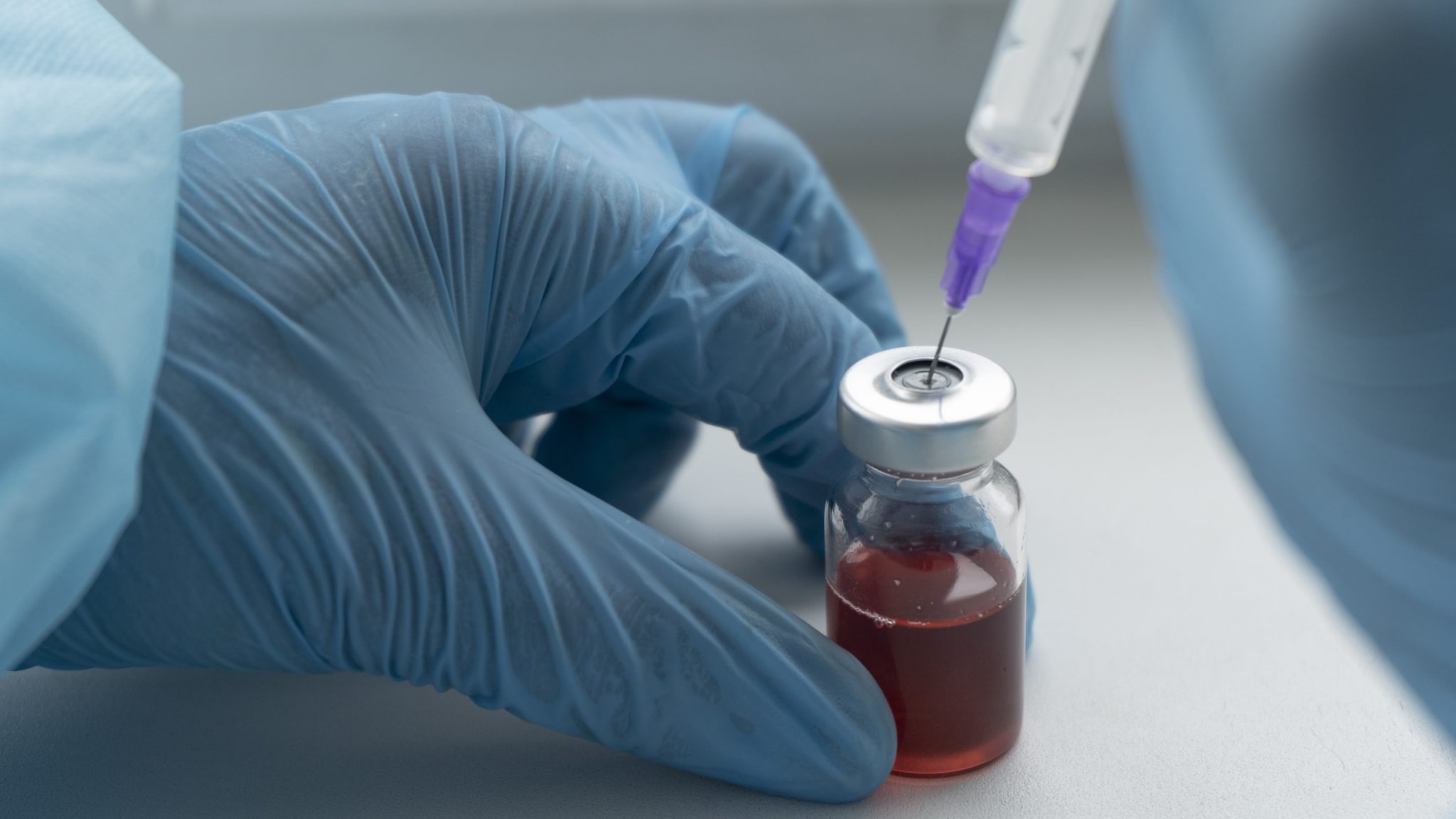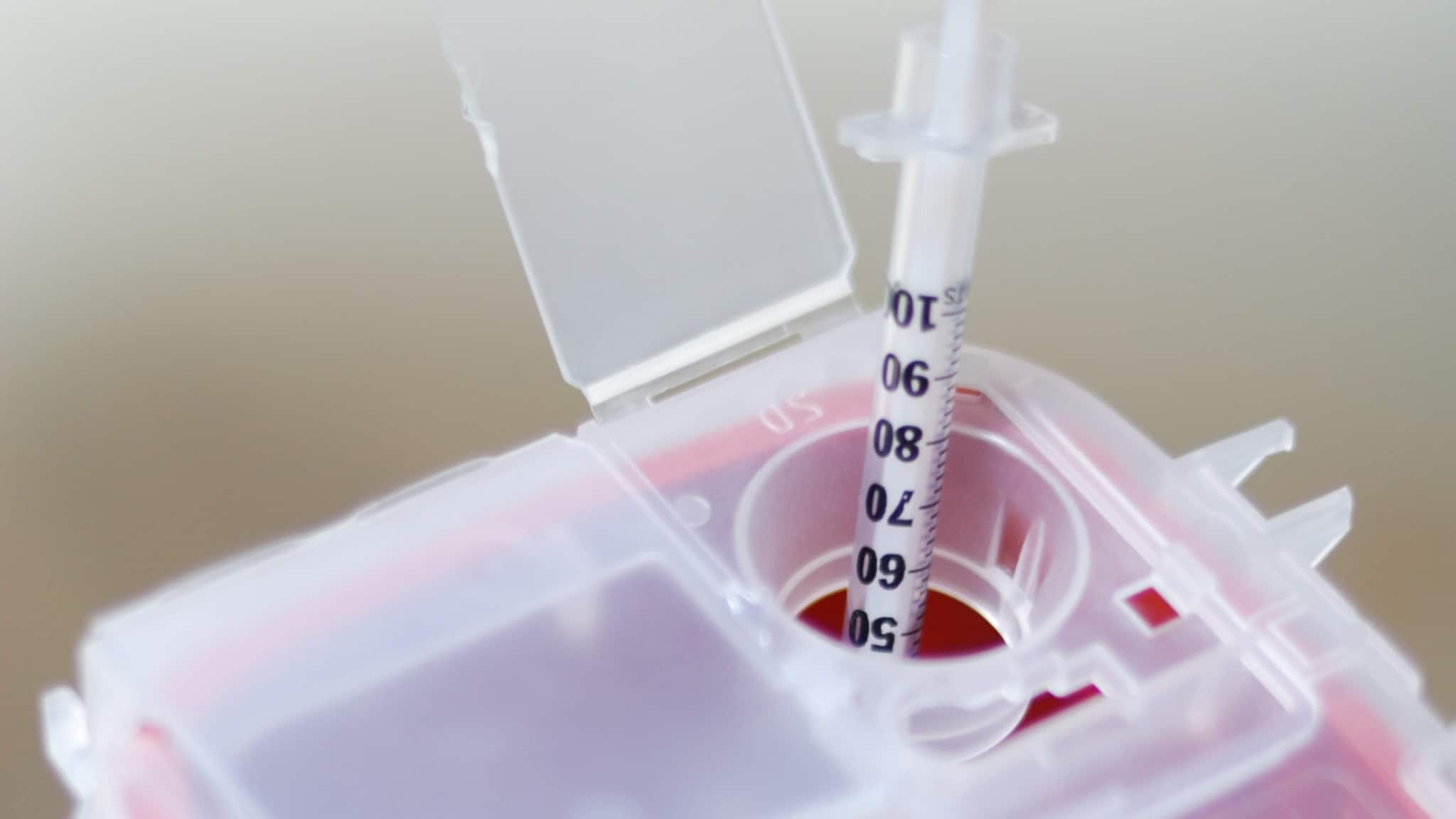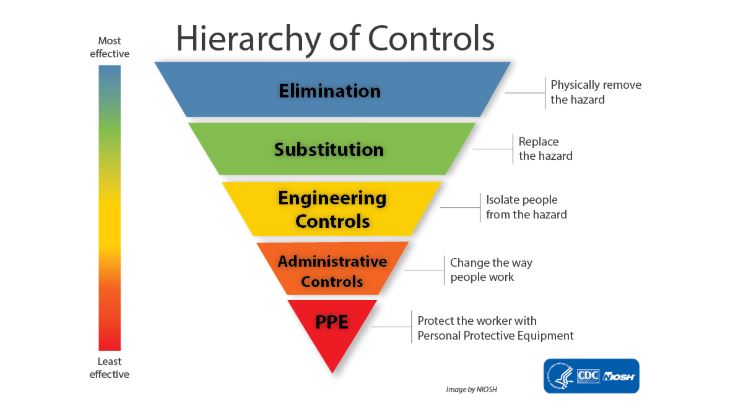At a glance
- Healthcare workers are at risk from exposure to bloodborne pathogens.
- Human immunodeficiency virus, hepatitis B virus, and hepatitis C virus are three of the most common bloodborne pathogens.
- Knowing how to treat exposures and prevent risk of a bloodborne disease is vital.

Exposure risk and treatment

Healthcare workers should be aware of exposure risks to hepatitis B, hepatitis C, and HIV. Hepatitis B and C cause serious liver damage. HIV disables the body’s immune system so it cannot fight infection. Exposure can occur by:
- A needlestick puncture
- Another sharps injury
- Contact with patient blood or other body fluids
Substances posing infection transmission risks include:
- Blood
- Body fluids, including saliva and urine contaminated with blood
- Other potentially infectious materials (semen; vaginal secretions; and cerebrospinal, synovial, pleural, peritoneal, pericardial, and amniotic fluids) or tissue
- Concentrated virus or other bloodborne pathogens
Treatment

Provide immediate care after exposure by taking the following steps:
- Wash needlestick or sharp punctures and cuts with soap and water.
- Flush splashes to the nose, mouth, or skin with water.
- Irrigate eyes with clean water, saline, or sterile irrigants.
- Report the incident to your supervisor.
Immediately seek medical care to determine risk associated with the exposure.
Post-exposure prophylaxis
Healthcare providers or workers should deliver post-exposure prophylaxis (PEP) for exposures posing infection transmission risks.
- HBV
- Give PEP as soon as possible, preferably within 24 hours.
- PEP can be given to pregnant women.
- HCV – PEP is not recommended for HCV.
- HIV
- Initiate PEP as soon as possible, within hours of exposure.
- Offer pregnancy testing to all women of childbearing age even if they are not known to be pregnant.
- Seek expert consultation if viral resistance is suspected.
- Administer PEP for 4 weeks if tolerated.
Perform follow-up testing and provide counseling.
- HBV exposures
- Test for anti-HB 1 to 2 months after the last dose of the vaccine if only a vaccine is given.
- Follow-up is not needed if the exposed person is immune to HBV or has received hepatitis B immune globulin PEP.
- HCV exposures
- Perform testing for anti-HCV and alanine transaminase 4 to 6 months after exposure.
- Perform HCV RNA testing at 4 to 6 weeks if an earlier diagnosis of HCV infection is desired.
- Confirm repeatedly reactive anti-HCV enzyme immunoassays with supplemental tests.
- HIV exposures
- Evaluate exposed persons taking PEP within 72 hours after exposure and monitor them for drug toxicity for at least 2 weeks.
- Perform HIV antibody testing for at least 6 months post-exposure (e.g., at baselines of 6 weeks, 3 months, and 6 months).
- Perform HIV antibody testing for illness compatible with an acute retroviral syndrome.
- Advise using precautions to prevent secondary transmission during the follow-up period.
Who to contact in an emergency
Prevention
Reporting
Report blood and body fluid exposure immediately. Be sure to complete an incident report where applicable. This might initiate an investigation to prevent other incidents from occurring.
Collect the following information when reporting:
- Date and time of the exposure
- Procedure or action being performed during the injury
- Specific information about the exposure (e.g., profession, department or unit, shift, injury to user or non-user, etc.)
- Specific type of device being used, if known indicate brand and model
The Occupational Safety and Health Administration (OSHA) Bloodborne Pathogens Standard requires employers to identify, evaluate, and implement safer medical devices. This includes devices with sharps injury protection. The standard mandates reporting the following information in a sharps injury log:
- Information about the injury while protecting the employee confidentiality
- Type and brand of the device involved (if known)
- Department or work area where the exposure occurred
- Explanation of how the exposure occurred:
- How deep was the injury?
- Did the injury occur while the employee was using a safety device?
- Was a protective mechanism activated?
It is also critical to abide by confidentiality requirements established in the Health Insurance Portability and Accountability Act (HIPAA) and the OSHA Access to Employee Exposure and Medical Records.
Exposure protection

Healthcare workers and employers should take advantage of sharps-free equipment to prevent exposures and infection.
Devices with sharps injury protection (SIP) have built-in engineering controls and are designed to prevent injuries. SIPs include needles that retract or are covered by a shield. Go to the International Safety Center or the International Sharps Injury Prevention Society for more information on these devices.
Sharps disposal

Improper sharps disposal is a significant cause of injury in healthcare settings. Designated staff should:
- Ensure that all staff are educated in proper sharps disposal.
- Monitor the fill level of all containers.
- Prohibit placement of non-sharps waste in a sharps container.
Hierarchy of Controls

When developing an exposure prevention plan, always consider the following hierarchy of controls.
Elimination or substitution
Eliminating sharps or substituting with equipment that does not cause puncture wounds or lacerations can reduce risks. Examples include sharp-free medication delivery systems and blunt surgical suture needles.
Work practices and administrative controls
Policies and procedures can help protect healthcare workers from bloodborne pathogens. These include:
- An exposure control plan to identify work practices at risk of bloodborne pathogen exposure.
- Policies to reduce exposure risks including:
- Clearly labeling biohazardous waste
- Procedures for safely disposing biohazardous waste
- Disposing full sharps containers regularly
- Protocols to follow when exposure occurs
Engineering controls
Engineering controls are important for protecting against bloodborne pathogen hazards. They include:
- Sharps disposal containers
- Made with puncture-resistant plastic or metal
- Specially designed lids that only allow sharps to be deposited
- Specifically designed too small for a hand to enter
- Clearly labeled in areas where needed
- Safety-engineered sharps devices
- Retracting needles, sliding sheaths, and hinged needle shields
Personal protective equipment
Administrative and engineering controls are preferred methods of protecting healthcare workers. However, using personal protective equipment (PPE) such as gloves are a part of routine care with patients. When protecting against bloodborne pathogens, PPE includes:
- Facial protection
- Masks or face shields
- Respirators
- Eye protection
- Goggles or glasses with side protection
- Gloves
- Gowns and other protective clothing
Resources
- CDC Sharps Safety for Healthcare Settings
- Hand Hygiene in Healthcare Settings
- National Center for Emerging and Zoonotic Infectious Diseases
- National Center for HIV, Viral Hepatitis, STD, and TB Prevention
- Occupational Safety and Health Administration
- Protect Yourself and Others - Use Sharps with Safety Features
- Protection Healthcare Personnel
- Resources for Reducing Bloodborne Pathogen Exposures in Healthcare Settings
